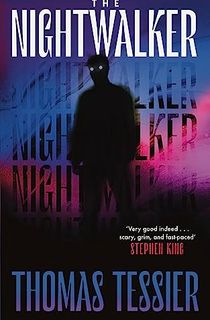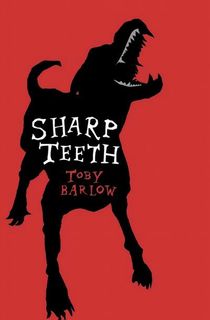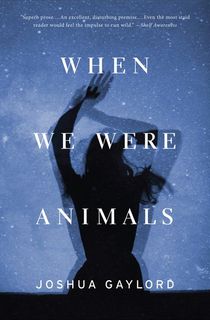Nat Cassidy’s latest horror novel, When the Wolf Comes Home, will be released on April 22nd. Garnering the coveted trifecta of stars (Booklist, Library Journal, Publishers’ Weekly), it seems the consensus is clear: Cassidy has written his best book yet.
On its surface, When the Wolf Comes Home is an immersive, terrifying, and highly entertaining take on the werewolf trope. But upon further reflection, the novel emerges as more—a moving and thought-provoking demand to the reader, forcing them to confront the power fear holds over us all.
It struck me as a very 21st Century way to approach an ancient and well-worn trope. Being a librarian whose focus is on matching books with readers, it immediately led me to think about other authors who have used the werewolf as a way to take a deeper dive into the horrors of existing in the world.
Today I am sharing those with you—nine must-read werewolf novels, in the order in which they were originally released, in three distinct categories.
As you read through this list, not only will you find great reads, but you will also see a modern version of the werewolf story emerge, creating a path that leads directly to Cassidy.
The Werewolf Confronts the Horrors of the Late 20th Century
These three novels, published during the waning days of the 20th Century and into the dawn of the 21st, were so ahead of their time that two of the three did not find an audience until closer to the present. Their reprints have helped to keep a new, scarier version of the werewolf alive for the next generation of writers.
1979

The Nightwalker
Bobby is an American Vietnam Vet who accidentally killed his British girlfriend while over in London. At least he thinks it was an accident.
But why are his hands tingling and his anger rising?
Tessier’s resurrection of the werewolf novel from near extinction not only set a precedent for confronting the horrors of modern war through the trope, but also allowed future writers the freedom of just allowing their werewolves to exist, without the lore of the lunar cycle.
1989

The Wolf's Hour
McCammon takes the 20th century’s biggest villains, the Nazis, and rewrites the history of the days leading up to D-Day. The story centers around Michael Gallatin, one of Britain’s best secret agents, spies, and killers, who also happens to be a werewolf.
This sweeping alternative history epic is filled with action, accurate historical details, romance, adventure, suspense, and, of course, a werewolf plying his violent power for the good of all mankind.
2003

Shapeshifter
Mark lives with the curse of being a werewolf, but he has also worked hard to keep it under control. When CEO Bernard finds out Mark’s secret, he uses it as a way to control Mark for his own nefarious purposes.
As violent as any werewolf novel ever written, Gonzalez’s story also gives us a werewolf with heart—one that is an underdog, not an alpha out for revenge.
No Longer Lone, The Werewolf Moves in Packs
As the werewolf made its way deeper into the new century, it transformed once again, from loner to pack member. Here we have three critically acclaimed novels that each feature werewolves as they exist together, in groups.
2007

Sharp Teeth
Introducing the urban wolf through a cast of characters—men and women who can morph at will—Barlow crafts a compelling, complex, and violent story of rival packs. Roaming between LA and Mexico, these wolves are involved in underground crime—and plenty of spicy romance.
Written in a free verse style where the ends of each line combine to create the illusion of literal sharp teeth, this is a striking story that continues to find readers almost 20 years after its initial release.
2015

When We Were Animals
From an urban pack to an entire town, Lumen Fowler harbors a very dark secret.
Every teenager in her small town “breaches” with each full moon for a year after they hit puberty. They transform into beasts that run wild, obsessed with sex and violence.
Every teen except her, that is.
Told as a confession from the present, the horrifying shapeshifting action lures readers in from the start. But then the tension shifts, and the unease come directly from Lumen herself, her family secrets, and her denial of her true self.
2016

Mongrels
An unnamed narrator is being raised by his Aunt and Uncle in their family of werewolves. Readers follow the boy as he waits to see if he will mature into a wolf himself, learning the logistics of both surviving a life lived on the margins in modern America and attending to their werewolf needs.
The novel that put Stephen Graham Jones on the mainstream map, Mongrels is many things at once: a stirring coming of age tale that shines a light on the struggles of the underclass in America, a gruesome and violent horror story, and a novel that adds a whole new level of realism to the age old lycanthropy myth.
The Werewolf Fights Misogyny and More
The first six books on this list were all written by men, but as we move chronologically, women have “entered the chat,” and they are angry at having been ignored. Good thing they have the werewolf trope as a way to explore that anger and seek revenge.
2019

Empire of Wild
Joan has been searching for her missing husband, Victor, for over a year. Until one say she hears his voice preaching from the stage of a revival tent in a Walmart parking lot.
The preacher seems not to know her, but Joan, along with her nephew and an elder, know they need to fight to not only get Victor back, but also to keep everyone they hold dear safe.
Dimaline’s novel is unique on this list, as our heroine is not the werewolf herself. Instead, she's fighting the Rogarou, a werewolf-like creature that haunts the roads and woods of the Métis, indigenous communities of Canada.
2021

Nightbitch
New mom Rachel is struggling. Her husband is always on the road, and caring for her two-year-old leaves no time for her art.
But things change when she starts to notice some invigorating physical changes: urges to eat raw meat, sharper teeth, hair in new places, and more.
Think Bunny by Awad meets “Metamorphosis” by Kafka, rather than more classic werewolf fare. Thrilling, immersive, weird, thought-provoking, and bursting with anger, Nightbitch is the honest, feminist werewolf novel that 21st century readers need.
2022

Such Sharp Teeth
Rory never imagined she would return home again. But when her pregnant twin sister needs her help, Rory reluctantly makes her way back.
On the drive home after a night at the local bar, Rory hits an animal. When she gets out to check on it, she is attacked.
She survives, but is not unscathed, as she finds out with the next full moon.
A USA Today bestseller, Such Sharp Teeth blends dark humor, a compelling pace, and body horror with serious contemplations of trauma, anger, and the vulnerability of love. This combination showcases why, despite having taken its time rising to prominence, the female werewolf is not going away anytime soon.
Featured image: Annie Spratt/Unsplash






